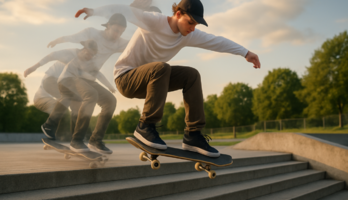Диссертация (1136792), страница 31
Текст из файла (страница 31)
– №. 3. – P. 3-13.96.Goldman A. D., Penner A. M. Exploring international gender differencesin mathematics self-concept //International Journal of Adolescence, Youth. – 2014. –P. 1-16.97.Goodenow C. Classroom belonging among early adolescent students re-lationships to motivation, achievement //The Journal of Early Adolescence.
– 1993. –Т. 13. – №. 1. – P. 21-43.98.Gordon K. A. “Resilient Hispanic youths' self-concept, motivational pat-terns // Hispanic Journal of Behavioral Sciences. – 1996. – 18(1). – P. 63-73.99.Granovetter M. A theoretical agenda for economic sociology //Center forCulture, Organizations, Politics. – 2000.100. Griffin P. Developing a measure of wealth for primary student familiesin a developing country: Comparison of two methods of psychometric calibration//Studies in Educational Evaluation. – 2005. – Т. 31. – №.
2. – P. 192-206.101. Guo S. Economic Integration of Recent Chinese Immigrants in Canada’sSecond-Tier Cities: The Triple Glass Effect, Immigrants’ Downward Social Mobility// Canadian Ethnic Studies. – 2013. – 45(3). – P. 95-115.164102. Hair N. L. et al. Association of child poverty, brain development,, academic achievement //JAMA pediatrics.
– 2015. – Т. 169. – №. 9. – P. 822-829.103. Hansen D. M., Larson R. W., Dworkin J. B. What adolescents learn inorganized youth activities: A survey of self‐reported developmental experiences//Journal of research on adolescence. – 2003. – Т. 13. – №.
1. – С. 25-55.104. Hansen M.N. Rational Action Theory and Educational Attainment.Changes in the Impact of Economic Re-sources // Eur Sociol Rev. 2008. Vol. 24, №1. P. 1–17.105. Hartlaub V., Schneider T. Educational choice and risk aversion: Howimportant is structural vs. individual risk aversion?. – SOEPpapers on multidisciplinary panel data research, 2012.
– №. 433.106. Henderson A. T., Berla N. A new generation of evidence: The family iscritical to student achievement. – 1994.107. Herbert J., Stipek D. The emergence of gender differences in children'sperceptions of their academic competence //Journal of Applied Developmental Psychology. – 2005. – Т. 26. – №. 3. – P.
276-295.108. Holland P. W. Statistics, causal inference //Journal of the American statistical Association. – 1986. – Т. 81. – №. 396. – P. 945-960.109. Holton R. J. Rational choice theory in sociology //Critical Review. –1995. – Т. 9. – №.
4. – P. 519-537.110. Homans G. C. Social behavior as exchange //American journal of sociology. – 1958. – P. 597-606.111. Hoyle R. H. Confirmatory factor analysis //Handbook of applied multivariate statistics and mathematical modeling. – 2000. – С. 465-497.112. Ivaniushina V.A., Zapletina O.O. Participation in Extracurricular Activities, Development of Personal, Interpersonal Skills in Adolescents.
// Journal of Siberian Federal University. Series: Humanities, Social Sciences. 2015. Vol. 8. No. 11.P. 2408-2420.165113. Jackson D.L. Revisiting Sample Size and Number of Parameter Estimates: Some Support for the N:q Hypothesis // Structural Equation Modeling: AMultidisciplinary Journal. 2003. Vol. 10, № 1. P.
128–141.114. Jacob M., Tieben, N. Social selectivity of track mobility in secondaryschools: a comparison of intra-secondary transitions in Germany and the Netherlands.Mannheimer Zentrum für Europ. Sozialforschung. 2007.115. Kahneman D., Tversky A. Prospect theory: An analysis of decision under risk //Econometrica: Journal of the econometric society. – 1979. – P. 263-291.116. Kandel D., Lesser G. S. School, family, and peer influences on educational plans of adolescents in the United States and Denmark //Sociology of Education. – 1970. – С. 270-287.117.
Kao G.,Tienda M. Educational aspirations of minority youth // Americanjournal of education. – 1998. – P. 349-384.118. Kao G.,Tienda M. Optimism, achievement — the educational performance of immigrant youth // Social Science Quarterly. – 1995. – 76(1). – P.
1-19.119. Kearney-Cooke A. Gender differences and self-esteem //The journal ofgender-specific medicine: JGSM: the official journal of the Partnership for Women'sHealth at Columbia. – 1998. – Т. 2. – №. 3. – С. 46-52.120. Kline R.B. Principles and Practice of Structural Equation Modeling.Guilford Press, 2011. 445 p.121. Laible D. J., Carlo G., Raffaelli M. The differential relations of parentand peer attachment to adolescent adjustment //Journal of Youth and Adolescence.
–2000. – Т. 29. – №. 1. – С. 45-59.122. Lance C. E., Vandenberg R. J. (ed.). Statistical, methodological myths,urban legends: Doctrine, verity, fable in organizational, social sciences. – Routledge2010.123. Lance C. E., Vandenberg R. J. More statistical, methodological myths,urban legends. – Routledge 2014.124. Lareau A.
Unequal childhoods: Class, race,, family life. Berkeley: University of California Press 2003.166125. Larson L. E. The influence of parents and peers during adolescence: Thesituation hypothesis revisited //Journal of Marriage and the Family. – 1972. – С.
6774.126. Larson R. W., Brown J. R. Emotional development in adolescence: Whatcan be learned from a high school theater program. Child Development. – 2007. –78(4). – P. 1083-1099.127. Larson R. W., Hansen D. M., Moneta G. Differing profiles of developmental experiences across types of organized youth activities //Developmental psychology. – 2006. – Т. 42. – №.
5. – P. 849.128. Larson R., Hansen D., Walker K. Everybody’s gotta give: Developmentof initiative, teamwork within a youth program //Organized activities as contexts ofdevelopment: Extracurricular activities, after-school, community programs. – 2005. –P. 159-183.129. Lin N. Building a network theory of social capital // Connections. –1999. – 22(1). – P. 28-51.130. Lindberg S. et al. Gender differences in children's math self-concept inthe first years of elementary school //Journal of Education, Learning. – 2013.
– Т. 2.– №. 3. – P. 1.131. Lipscomb S. Secondary school extracurricular involvement, academicachievement: a fixed effects approach // Economics of Education Review. – 2007. –26. – P. 463–472.132. Liu W. C., Wang C. K. J., Parkins E. J. A longitudinal study of students’ academic self-concept in a streamed setting: The Singapore context // British Journal of Educational Psychology. – 2005. – 75(4). – P. 567–586.133. Logan J. R. The persistence of segregation in the 21st century metropolis//City & community. – 2013.
– Т. 12. – №. 2. – С. 160-168.134. Lubbers M. J., Kuyper H., Van Der Werf M. P. C. Social comparisonwith friends versus non‐friends //European Journal of Social Psychology. – 2009. – Т.39. – №. 1. – P. 52-68.167135. Mahoney J. L., Stattin H. Leisure activities, adolescent antisocial behavior: The role of structure, social context //Journal of adolescence. – 2000. – Т. 23. –№. 2. – P. 113-127.136. Marsh H.W., Parker J. W.
Determinants of student self-concept: Is it better to be a relatively large fish in a small pond even if you don’t learn to swim aswell? // Journal of Personality, Social Psychology. – 1984. – 47(1). – P. 213–231.137. Marsh H.W., Shavelson R. Self-Concept: Its Multifaceted, HierarchicalStructure // Educational Psychologist. – 1985. – 20(3). – P. 107–123.138.
Marsh H. W., Hocevar D. Application of confirmatory factor analysis tothe study of self-concept: First-and higher order factor models and their invarianceacross groups //Psychological bulletin. – 1985. – Т. 97. – №. 3. – С. 562.139. Marsh H. W. Verbal, Math Self-Concepts: An Internal/External Frameof Reference Model // American Educational Research Journal. – 1986. – 23(1). – P.129–149.140.
Marsh H.W. Age and sex effects in multiple dimensions of self-concept:Preadolescence to early adulthood //Journal of educational Psychology. – 1989. – Т.81. – №. 3. – С. 417.141. MarshH.W.Thestructureofacademicself-concept:TheMarsh/Shavelson model //Journal of Educational psychology. – 1990. – Т. 82. – №.4. – С. 623.142. Marsh H.
Public, Catholic Single-Sex, Catholic Coeducational HighSchools: Their Effects on Achievement, Affect,, Behaviors // American Journal ofEducation. – 1991. – 99(3). – P. 320–356.143. Marsh H. W. Failure of High-Ability High Schools to Deliver AcademicBenefits Commensurate With Their Students’ Ability Levels // American EducationalResearch Journal. – 1991. – 28(2). – P. 445–480.144.
Marsh H. W. Extracurricular activities: Beneficial extension of the traditional curriculum or subversion of academic goals? //Journal of educational psychology. – 1992. – Т. 84. – №. 4. – С. 553.168145. Marsh H. W., Chessor D., Craven R., Roche, L. The Effects of Gifted,Talented Programs on Academic Self-Concept: The Big Fish Strikes Again // American Educational Research Journal. – 1995. – 32(2).
– P. 285–319.146. Marsh, Herbert W., Yeung, A. S.. Causal effects of academic selfconcept on academic achievement: Structural equation models of longitudinal data //Journal of Educational Psychology – 1997. – 89(1) – P. 41–54.147. Marsh H., Craven R. Self-concept theory, research, practice advances forthe new millennium : proceedings of the inaugural international conference. – University of Western Sydney, Sydney, Australia. University of Western Sydney, SELFResearch Centre. – 2000.148. Marsh H.W., Kong C.-K., Hau K.-T.
Longitudinal multilevel models ofthe big-fish-little-pond effect on academic self-concept: Counterbalancing contrast,reflected-glory effects in Hong Kong schools // Journal of Personality, Social Psychology. – 2000. – 78(2). – P. 337–349.149. Marsh H. W, Koller O., Baumert, J. Reunification of East, West GermanSchool Systems: Longitudinal Multilevel Modeling Study of the Big-Fish-Little-PondEffect on Academic Self-Concept // American Educational Research Journal. – 2001.– 38(2). – P. 321–350.150. Marsh H.
W., Hau K.-T. Big-Fish--Little-Pond effect on academic selfconcept: A cross-cultural (26-country) test of the negative effects of academically selective schools // American Psychologist. – 2003. – 58(5). – P. 364–376.151. Marsh, Herbert W., Trautwein, U., Lüdtke, O., Köller, O., Baumert, J.Academic Self-Concept, Interest, Grades, Standardized Test Scores: Reciprocal Effects Models of Causal Ordering // Child Development – 2005.










